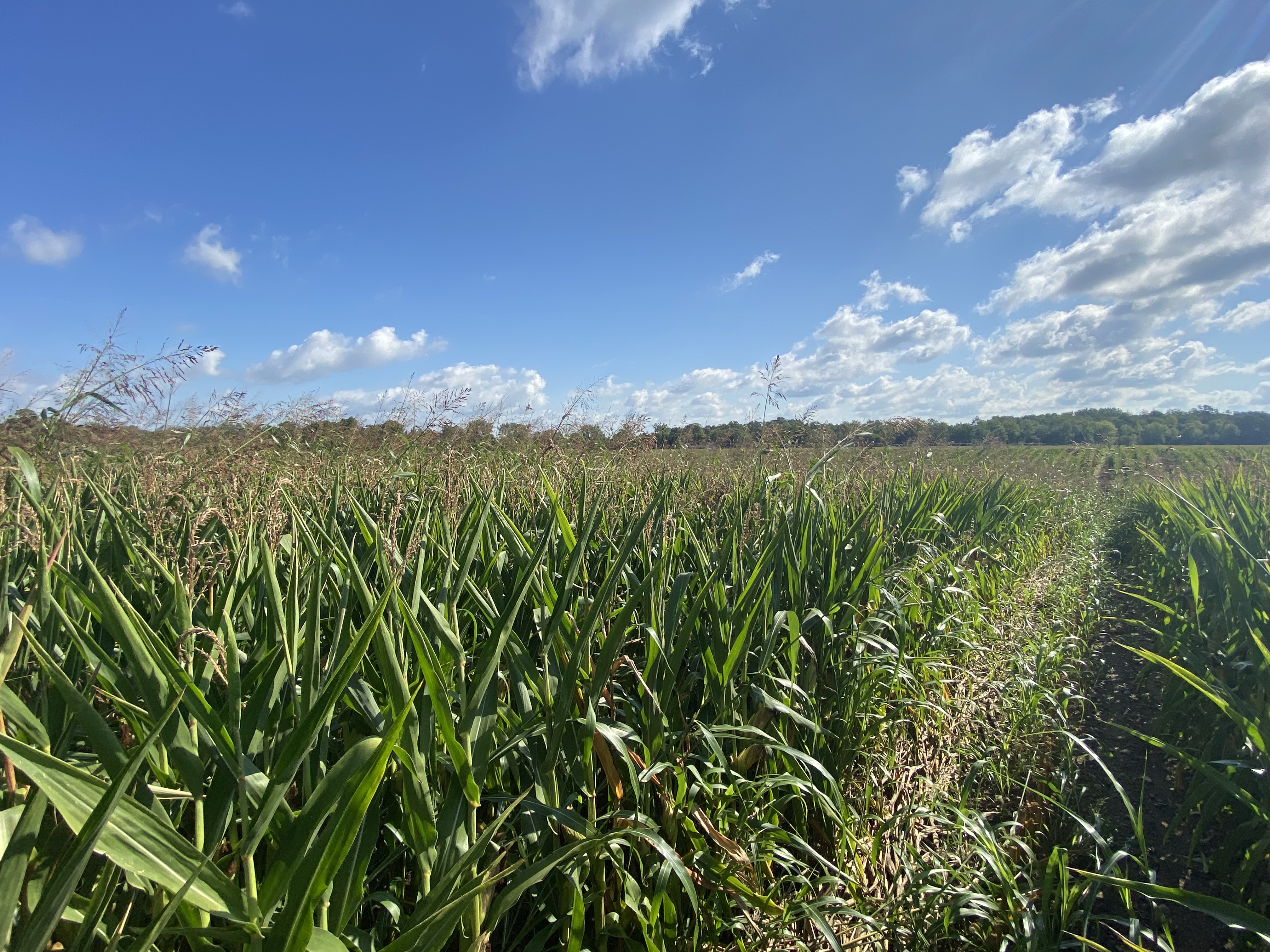Fall options to control johnsongrass
Johnsongrass rhizomes are not very cold tolerant. Take advantage of Michigan winter temperatures to help reduce its population.

Johnsongrass (Sorghum halepense) is an aggressive perennial weed that is difficult to control given its extensive rhizome system. However, its rhizomes are also one of johnsongrass’ largest weaknesses because they are not very cold tolerant. Therefore, fall tillage practices that bring rhizomes to the soil surface and expose them to freezing winter temperatures may reduce the population over time. However, like other perennial weeds, tillage will cut rhizomes into small pieces that can then be spread throughout the field. Properly cleaning equipment after tillage is important in preventing the spread of johnsongrass into non-infested fields.
Furthermore, scouting after fall tillage is important to make a timely spring herbicide application. Repeated spring tillage to a 6-to-8-inch depth has also been shown to increase herbicide efficacy by making new growth emerging from small rhizomes more susceptible to herbicide application. Additionally, johnsongrass seeds cannot successfully emerge when buried at least 12 inches deep; thus, in fields with severe infestations, aggressive deep tillage, e.g. moldboard plow, may be another control tactic. Fall applications of glyphosate can be effective on new growth after harvest, however a good rule of thumb for successful control is to only apply glyphosate when the daily temperature is 50 degrees Fahrenheit or higher.
Fall cover crop planting is becoming more common in Michigan. Currently, little research has been performed on the impact of cover crops on johnsongrass infestations. However, it would not be expected for cover crops to suppress johnsongrass due to its extensive rhizome system.

It is hard to control johnsongrass once it is well-established. Taking control of johnsongrass before it takes control of your non-infested fields is a high priority. Effective johnsongrass programs take an integrated approach:
- Prevent johnsongrass from becoming established in new fields by preventing the spread of rhizomes from infested to non-infested areas, cleaning equipment and harvesting infested fields last.
- Control johnsongrass in fence rows and ditch banks, which can be common sources of new infestations.
- If johnsongrass does appear in a new field, focus on controlling it prior to establishment as herbicides are more effective on seedlings than on plantlets growing from rhizomes. Amazingly, johnsongrass plants emerging from seeds can produce rhizomes in three to four weeks.
- Consider fall tillage to bring rhizomes to the soil surface.
- Disk multiple times in the spring prior to herbicide application followed by a two-pass program with full labeled rates (Table 1).
Overall, keep in mind that dense infestations of johnsongrass did not develop over one season but over many. It will take patience and persistence over many seasons to control well-established johnsongrass populations.
|
Table 1. Effective johnsongrass herbicide programs in corn*. (See the Michigan State University Extension Weed Control Guide for Field Crops for rate information and details.) |
||||
|---|---|---|---|---|
|
Herbicide—Soil-applied |
Site of Action No.** |
Seedling Efficacy |
Rhizome Efficacy |
Corn Height/Stage |
|
Balance Flexx |
27 |
Good |
Fair |
Effective preemergence, may be applied postemergence from spike through V2. |
|
Corvus |
2, 27 |
Good |
Fair |
Effective preemergence, may be applied postemergence from spike through V2. |
|
Herbicide—Postemergence |
Site of Action No.** |
Seedling Efficacy |
Rhizome Efficacy |
Corn Height/Stage |
|
Accent Q |
2 |
Excellent |
Good |
|
|
Beacon |
2 |
Good |
Fair |
|
|
Capreno |
2, 27 |
Excellent |
Good |
V1 to V5 |
|
Revulin Q |
2, 27 |
Excellent |
Good |
|
|
Steadfast Q |
2, 2 |
Excellent |
Good |
20 inches tall or V6 |
|
Glyphosate |
9 |
Excellent |
Excellent |
|
|
Liberty |
10 |
Good |
Fair |
|
* See factsheet Johnsongrass Management in Soybeans for soybean herbicide programs.
** In Michigan, we have populations of johnsongrass that are resistant to Group 2 (ALS-inhibiting herbicides). In other regions of the United States, Group 9 (glyphosate) resistant populations have been discovered. See MSU Plant & Pest Diagnostics to learn more about herbicide resistance screening.



 Print
Print Email
Email